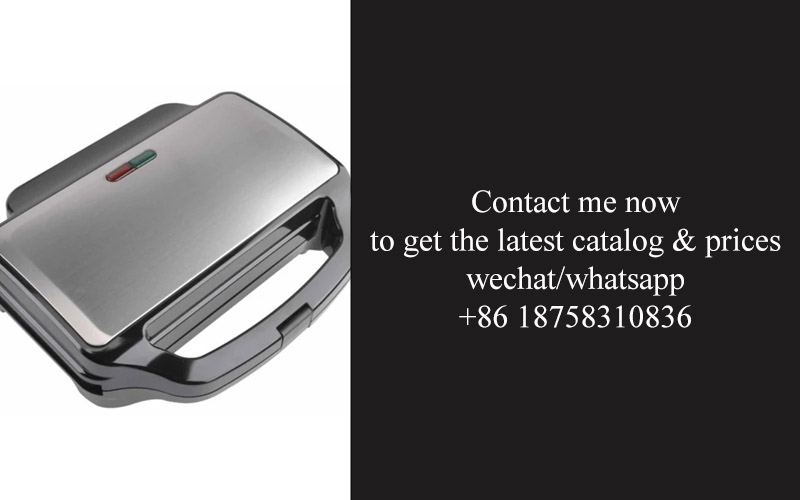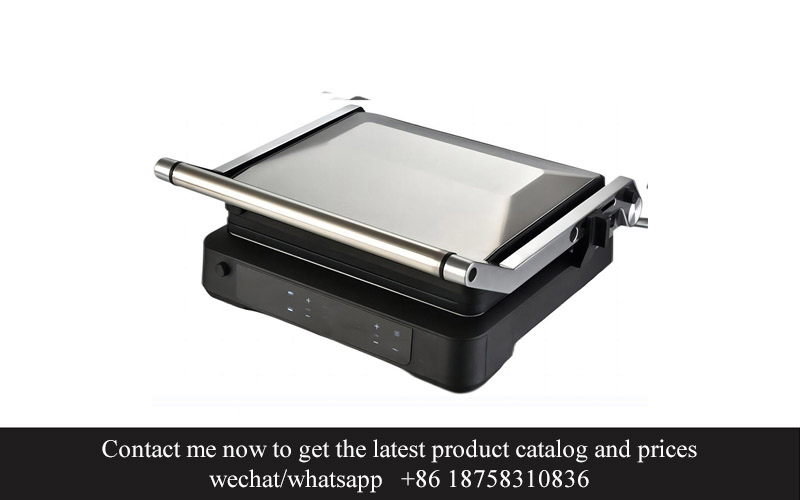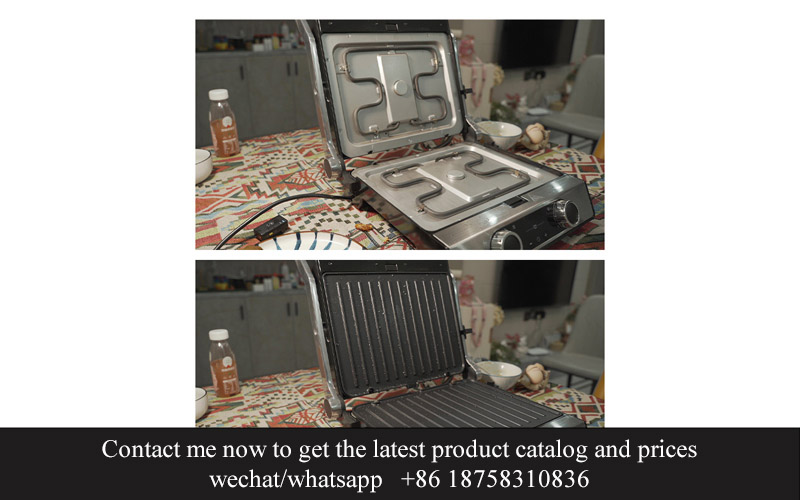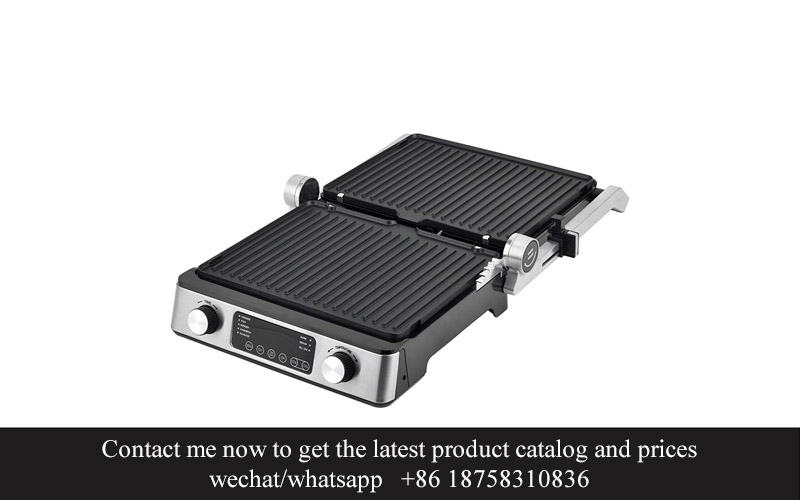Address
304 North Cardinal
St. Dorchester Center, MA 02124
Work Hours
Monday to Friday: 7AM - 7PM
Weekend: 10AM - 5PM
Address
304 North Cardinal
St. Dorchester Center, MA 02124
Work Hours
Monday to Friday: 7AM - 7PM
Weekend: 10AM - 5PM

In a world where the kitchen has evolved from a mere cooking space to a hub of innovation and convenience, the kitchen appliance industry finds itself at the forefront of technological advancements. The dynamic interplay between consumer needs, market trends, and cutting-edge technology has shaped the landscape of this sector. As we delve into the intricacies of navigating the challenges and opportunities within this industry, it becomes clear that understanding the consumer’s voice is key to driving success. From the sleek design of modern ovens to the smart features of refrigerators, the journey of appliance development is a testament to how consumer preferences have influenced the very fabric of our culinary experiences.
The evolution of kitchen appliances has been a fascinating journey, intertwining technological advancements with changing culinary trends. From the early days of basic cookware to the sleek, smart appliances we see today, both European and American markets have played pivotal roles in shaping the landscape of kitchen technology.
In Europe, the emphasis has often been on efficiency and elegance. Stoves and ovens with intricate designs and precise temperature control became a staple, reflecting the continent’s long-standing culinary traditions. The rise of integrated kitchen appliances, like the first refrigerator in the early 20th century, marked a significant shift towards modern convenience. Over the years, European manufacturers have focused on innovations that not only make cooking easier but also enhance the aesthetic appeal of the kitchen space.
In the United States, the narrative is slightly different. The country’s love for innovation and technology has driven the kitchen appliance industry forward. The introduction of electric appliances in the mid-20th century, such as toasters and blenders, revolutionized home cooking. American brands like GE and Whirlpool have been at the forefront of developing user-friendly, durable appliances that cater to the busy lifestyles of American families.
The integration of integrated circuit boards (ICBs) into kitchen appliances has been a game-changer. These tiny components have transformed the way we interact with our kitchen tools. Smart sensors, for example, have made ovens more precise, ensuring perfectly roasted meats and baked goods. Similarly, refrigerators equipped with ICBs can now track food spoilage and adjust their cooling cycles accordingly, extending the freshness of ingredients.
European kitchens have embraced the concept of smart appliances with a European flair. High-end brands like Miele and Gaggenau offer sleek designs that seamlessly blend into modern kitchen decor. Their appliances are not just about convenience; they are a statement of luxury and sophistication. The use of ICBs in these products has allowed for features like touch controls and voice assistants, making the cooking experience more intuitive and personalized.
On the other side of the Atlantic, American brands have focused on making smart appliances accessible to a wider audience. Companies like Samsung and LG have developed appliances that are not only technologically advanced but also user-friendly. Their appliances often come with features like Wi-Fi connectivity, allowing users to control their kitchen gadgets remotely via smartphone apps. This integration has made meal prep more flexible and convenient for the fast-paced American lifestyle.
One of the key trends in the kitchen appliance industry is the emphasis on sustainability. Both European and American consumers are increasingly aware of the environmental impact of their appliances. Energy-efficient models, with ICBs that optimize energy use, are becoming more popular. Smart appliances also contribute to sustainability by reducing food waste through better inventory management.
Another notable trend is the crossover between professional-grade and home appliances. European brands like Smeg have designed kitchen appliances that look like they belong in a professional kitchen but are built for home use. American companies have followed suit, offering appliances that deliver restaurant-quality performance in the comfort of one’s own home.
In conclusion, the evolution of kitchen appliances in Europe and America has been marked by a blend of aesthetic appeal, technological innovation, and user convenience. The integration of ICBs has been a pivotal factor in this evolution, allowing for smart features that enhance the cooking experience. Whether it’s the sleek designs of European kitchens or the practical innovations of American homes, the future of kitchen appliances looks to be both smart and sustainable.

The heart of modern kitchen appliances beats with the precision and sophistication of integrated circuit (IC) boards. These tiny marvels of engineering have revolutionized the way we interact with our kitchen gadgets, making them smarter, more efficient, and incredibly versatile.
In the bustling world of electronics manufacturing, IC board factories stand as pillars of innovation. They are the assembly lines where the digital and physical worlds converge, producing the electronic brains that power a myriad of devices. These factories, often unseen by the end consumer, are the unsung heroes of the kitchen appliance industry.
The process begins with raw materials, including silicon wafers, metals, and plastics. These components are meticulously cleaned and cut to create the building blocks of an IC board. The wafer, a thin slice of silicon, is then coated with various chemicals and exposed to light in a process known as photolithography. This process patterns the wafer with the intricate circuit designs needed for the IC board.
Once the wafer has been etched with the circuits, it undergoes a series of chemical and thermal treatments to remove excess material and to form the necessary connections. The wafer is then divided into individual chips, each capable of performing specific functions within a kitchen appliance.
In the realm of kitchen appliances, these chips are responsible for everything from controlling the cooking temperature in an oven to managing the smart features of a refrigerator. The complexity of these IC boards has grown exponentially, with multi-layered designs that include processors, memory, and various sensors.
The precision required in IC board manufacturing is astonishing. The tolerances are so tight that a single nanometer can be the difference between a functioning chip and a faulty one. This is why the factories are equipped with state-of-the-art clean rooms, where air quality is meticulously controlled to prevent contamination.
Within these sterile environments, technicians use a combination of automated and manual processes to assemble the IC boards. Automated equipment, such as pick-and-place machines, ensures that each component is placed with precision. Meanwhile, human engineers oversee the process, making adjustments and ensuring quality control.
As the IC boards are assembled, they are tested repeatedly to ensure they meet the stringent quality standards set by appliance manufacturers. These tests can range from simple functional checks to complex simulations that mimic real-world usage scenarios.
The power of the IC board factory lies not just in its ability to produce these intricate components but in its ability to adapt to the ever-changing demands of the market. As consumer preferences shift towards more energy-efficient and connected appliances, these factories have to evolve quickly, investing in new technologies and processes to keep up.
One of the key advantages of IC board factories is their ability to scale production. Whether it’s a small batch of luxury appliances or a mass-produced line of budget-friendly units, these factories can adjust their output to meet demand. This scalability is crucial in the dynamic kitchen appliance market, where trends can shift rapidly.
Moreover, the factories are hubs of research and development. They are at the forefront of technological advancements, pushing the boundaries of what’s possible in kitchen electronics. This R&D focus ensures that the appliances we use in our homes are not only cutting-edge but also sustainable and environmentally friendly.
In conclusion, the power of IC board factories lies in their ability to produce high-quality, complex components that drive innovation in kitchen appliances. From the raw materials to the final product, these factories are a testament to human ingenuity and the relentless pursuit of technological excellence.

In the realm of kitchen appliance design, innovation isn’t just about creating new products; it’s about enhancing the user experience, streamlining processes, and integrating technology in ways that make cooking more enjoyable and efficient. Here are some groundbreaking ideas that are reshaping the kitchen appliance landscape:
1. Voice-Controlled CookingThe rise of smart homes has brought voice assistants into our everyday lives. Kitchen appliances are now being designed with voice-activated controls, allowing users to adjust settings, monitor cooking progress, and even select recipes with a simple command. This not only adds a touch of futuristic flair to kitchen tasks but also makes cooking accessible for those with physical limitations.
2. Modular Kitchen SystemsTraditionally, kitchen appliances were standalone units. However, modern design is moving towards modular systems where appliances can be easily interchanged or upgraded. Imagine a refrigerator that can be swapped for a wine cooler or a stove that can be transformed into an induction cooktop—this flexibility allows for a more personalized kitchen experience.
3. Energy-Efficient and Sustainable DesignWith environmental concerns at the forefront, appliance manufacturers are focusing on sustainability. We’re seeing appliances with energy-saving modes, LED lighting, and materials that are recyclable or biodegradable. Not only do these features help reduce the carbon footprint, but they also contribute to long-term cost savings for consumers.
4. Smart Cooking SensorsCooking is an art that requires precision, and new sensors are making it easier to achieve perfect results every time. Smart ovens and grills can now monitor the cooking environment and adjust heat levels to ensure even cooking without the need for constant supervision. These sensors can even alert users when the food is done, reducing the risk of overcooking.
5. Integrated Food Storage SolutionsFood storage is a crucial aspect of kitchen management, and innovative designs are making it more efficient. Refrigerators with built-in humidity controls and temperature zones for different types of food extend shelf life and maintain freshness. Some models even come with cameras and apps that allow users to monitor their fridge contents from their smartphones.
6. Customizable Cooking FunctionsModern appliances are becoming more like personal chefs, offering a variety of cooking functions and programs. Induction cooktops, for example, can simulate the heat of a gas stove while providing precise control. These appliances often come with preset programs for specific dishes, making it easier for even novice cooks to achieve professional-level results.
7. Interactive and Educational AppliancesCooking isn’t just a daily chore; it’s an opportunity to learn and explore new cuisines. Some appliance brands are incorporating interactive features that guide users through cooking processes, offering tips, and even suggesting recipe variations. This not only makes cooking more engaging but also educates users on various culinary techniques.
8. Smart ConnectivityThe ability to connect kitchen appliances to the internet has opened up a world of possibilities. Users can control their appliances remotely, receive notifications, and even have their appliances communicate with each other to optimize cooking times and energy use. This level of connectivity is turning the kitchen into a hub of smart living.
9. Ergonomic and User-Friendly DesignsInnovation isn’t just about technology; it’s also about usability. Modern appliances are being designed with ergonomics in mind, featuring intuitive interfaces, easy-to-clean surfaces, and thoughtful storage solutions. These design choices make appliances more pleasant to use and maintain.
10. Customization Through Add-OnsThe concept of add-ons is taking off in the kitchen appliance world. Users can now purchase additional attachments and accessories that expand the functionality of their appliances. For example, a countertop oven might come with a pizza stone or a steaming basket, allowing for a wider variety of cooking options without the need for additional appliances.
These innovative ideas in kitchen appliance design are not just about making cooking easier or more efficient; they’re about enhancing the overall kitchen experience. As technology continues to advance, we can expect to see even more creative and user-centric designs that transform the way we interact with our kitchen appliances.

In recent years, the kitchen appliance industry has undergone a remarkable transformation, with consumer demands evolving at a rapid pace. As a result, staying ahead of the curve and understanding market insights and industry trends has become crucial for manufacturers and retailers alike.
The rise of smart technology has been a significant driver in the kitchen appliance market. From smart refrigerators that can reorder groceries to ovens that can be controlled remotely, the integration of IoT (Internet of Things) has made cooking more efficient and personalized. Consumers are increasingly seeking appliances that offer convenience and connectivity, which has led to a surge in the sales of smart kitchen gadgets.
Energy efficiency is another trend that’s reshaping the industry. With the growing emphasis on sustainability and environmental concerns, appliances that consume less energy and reduce carbon footprints are becoming more popular. Energy Star-rated appliances are no longer a niche product; they are now a standard expectation in many markets, and manufacturers are responding by developing more energy-saving features.
Design is no longer just about aesthetics; it’s about functionality and user experience. Sleek, modern designs that blend seamlessly into kitchen interiors are in vogue. However, there’s also a trend towards appliances that are not only visually appealing but also ergonomic and user-friendly. This includes features like touchscreens, intuitive interfaces, and customizable settings that cater to individual preferences.
Health and wellness have become central themes in kitchen appliance design. There’s a growing demand for appliances that can help consumers make healthier choices. For example, juicers with advanced extraction systems that preserve the nutrients in fruits and vegetables, and slow cookers that offer healthier alternatives to fried or processed foods. The market is also seeing a rise in air fryers and pressure cookers, which provide healthier cooking options with minimal oil or shorter cooking times.
The commercial kitchen sector is experiencing a surge in demand for professional-grade appliances that can be used in both home and commercial settings. This overlap has opened up new opportunities for manufacturers to cater to consumers who enjoy cooking at home but want the same level of performance and durability as they would find in a restaurant kitchen. Features like high-temperature cooking capabilities, precise temperature control, and durable construction are becoming standard in these appliances.
Customization is also a key trend, with consumers looking for appliances that can be tailored to their specific needs. From different sizes and colors to modular designs that allow for easy upgrades and replacements, manufacturers are focusing on creating appliances that can be adapted to various kitchen layouts and personal preferences.
The market is becoming more global, with appliances designed and produced in one region finding their way into homes around the world. This globalization has led to a more diverse range of products and innovations, as manufacturers look to tap into different cultural preferences and culinary traditions. For instance, induction cooktops, which are popular in Europe, are becoming more mainstream in North America, while rice cookers and instant pots are increasingly sought after in Asia.
Lastly, the rise of online shopping and the influence of social media have changed how consumers discover and purchase kitchen appliances. Reviews, influencer endorsements, and social media campaigns have become crucial in the marketing mix, and manufacturers are adapting their strategies to leverage these digital platforms effectively.
In summary, the kitchen appliance industry is in a state of constant flux, with trends ranging from the integration of smart technology and health-conscious design to sustainability and global market expansion. Understanding these insights and trends is essential for those looking to stay competitive in this dynamic sector.

In the ever-evolving landscape of kitchen electronics, data has emerged as a pivotal force that shapes the future of these devices. From smart appliances that learn your habits to predictive maintenance systems that prevent downtime, the influence of data is profound.
Consumer behavior is at the heart of this transformation. The vast amounts of data collected from smart kitchen gadgets reveal preferences, cooking routines, and even dietary trends. Manufacturers are using this information to create appliances that not only cater to specific needs but also anticipate them. For instance, refrigerators that can suggest recipes based on the ingredients you have on hand or dishwashers that optimize their cycle times based on the types of dishes you wash regularly.
Predictive analytics is another area where data is making a significant impact. By analyzing historical usage data, appliances can predict when they might need maintenance or replacement parts, thereby reducing downtime and inconvenience. This foresight can extend to energy usage as well, with smart ovens and stoves learning your preferred cooking times and temperatures to optimize energy efficiency.
Customization is also a key aspect influenced by data. Smart kitchen appliances can now be tailored to individual preferences through software updates and personalization features. Imagine a coffee machine that adjusts its brewing temperature and strength based on your morning preferences, or a fridge that keeps a running inventory of your favorite foods and suggests meal options accordingly.
The Internet of Things (IoT) is another frontier where data is revolutionizing kitchen electronics. With IoT, multiple devices can communicate and collaborate to create a seamless kitchen experience. For example, a smart oven could be connected to your smartphone, allowing you to start cooking from anywhere in the house, or a range could synchronize with your stove to ensure even heat distribution.
Security is a critical concern in this data-driven era. Manufacturers are employing advanced encryption and authentication methods to protect the privacy of users’ data. This includes everything from personal usage patterns to sensitive payment information. As the reliance on data grows, ensuring that this information remains secure is paramount.
Data also plays a crucial role in sustainability efforts. Appliances that monitor their energy consumption can provide insights into how to reduce waste and save on utility bills. For instance, an energy-efficient dishwasher could offer tips on when to run it to maximize savings without compromising cleanliness.
Innovation in kitchen electronics is not just about adding new features; it’s about creating a cohesive ecosystem. Data analytics enable manufacturers to create a harmonious blend of appliances that work together seamlessly. This integration means that your kitchen appliances can not only perform their tasks more efficiently but also offer a unified experience that reflects the latest in home automation.
Lastly, the role of data in shaping the future of kitchen electronics cannot be overstated when it comes to sustainability and environmental impact. By analyzing the lifecycle of products, companies can design appliances that are not only energy-efficient but also environmentally friendly. This could mean using recycled materials, designing for longevity, or creating products that can be easily repaired or upgraded.
As we move forward, the power of data in kitchen electronics will continue to drive innovation. The key will be in how manufacturers balance the desire for new features with the need for security, privacy, and sustainability. By doing so, they can create a future where kitchen appliances not only make life easier but also smarter and greener.

In the world of kitchen appliances, there are several case studies that showcase successful product launches, each with its unique approach and market impact. Let’s delve into a few of these triumphs.
A sleek, minimalist oven with a smart interface was introduced by a well-known brand, revolutionizing the way consumers interact with their kitchen appliances. The sleek design and intuitive controls made it an instant hit, especially among tech-savvy consumers who appreciated the blend of style and functionality.
A compact, energy-efficient refrigerator caught the attention of eco-conscious buyers. Its innovative design not only maximized storage space but also featured a built-in water filter and smart cooling technology that adjusted to the contents inside, ensuring freshness without waste.
A line of countertop mixers with variable speed controls and a range of attachments became a staple in professional kitchens and home baker’s cabinets. The mixers were not just powerful but also durable, with a sleek aesthetic that matched modern kitchen decor.
A high-end range with induction cooktops and a convection oven was launched, offering precise temperature control and a quick-cook feature that reduced cooking times by up to 30%. The sleek stainless steel finish and the integration of smart technology allowed users to monitor and adjust cooking settings remotely.
A smart toaster with a variety of browning settings and a reheat function was a game-changer for breakfast enthusiasts. The toaster’s connectivity to a smartphone app allowed users to program toasting times and even sync with other kitchen appliances for a seamless morning routine.
A compact, portable induction cooktop was developed for those who prefer the convenience of cooking on the go. It featured a foldable design, making it easy to store and transport. The cooktop’s compatibility with various cookware sizes and its ability to maintain precise heat levels were standout features.
A countertop juicer that promised to extract more juice from fruits and vegetables with its advanced auger system was a hit with health-conscious consumers. The juicer’s design was not only functional but also visually appealing, with a modern look that complemented contemporary kitchens.
A high-tech vacuum sealer that integrated with a smart device was introduced, offering users the ability to vacuum-seal their food for extended freshness. The device’s sleek design and ease of use made it a must-have for food preservation enthusiasts.
A kitchen appliance brand launched a line of air fryers that promised healthier cooking with less oil. The air fryers were compact, versatile, and came with a variety of cooking modes, making them a favorite among those looking to adopt healthier cooking habits.
A smart coffee maker with a customizable brewing schedule and a range of brewing options became a staple in the morning routine of many. The coffee maker’s ability to connect to a smartphone app allowed users to start their day with a perfect cup of coffee, no matter where they were.
These case studies highlight the importance of innovation, user experience, and market trends in the successful launch of kitchen appliances. Each product managed to address a specific need or desire of consumers, often through a unique blend of design, technology, and convenience.

In the realm of smart kitchen solutions, the future is all about seamless integration and connectivity. As technology advances, the kitchen is transforming into a hub of innovation, where appliances communicate with each other and with the user in unprecedented ways. Let’s delve into some of the key aspects shaping this future.
Smart appliances are becoming increasingly common, with refrigerators that can track inventory, ovens that can be controlled remotely, and dishwashers that optimize cleaning cycles based on soil levels. These advancements are not just about convenience; they’re about creating a more efficient and sustainable kitchen environment.
One notable example is the integration of voice assistants into kitchen appliances. Companies like Amazon with Alexa and Google with Google Assistant are leading the charge, allowing users to manage their kitchen tasks with simple voice commands. This not only simplifies the cooking process but also caters to the growing trend of hands-free living.
Connectivity between appliances is another area of rapid development. Imagine a scenario where your coffee maker automatically starts brewing your morning coffee when it detects that your alarm has gone off. This level of synchronization is becoming a reality, thanks to the Internet of Things (IoT). Smart kitchen ecosystems are being developed, where every device can communicate with one another, ensuring a cohesive and efficient kitchen experience.
Energy efficiency is a critical factor in the future of smart kitchen solutions. As environmental concerns grow, manufacturers are focusing on creating appliances that consume less energy while still providing the same level of functionality. This includes the use of energy-saving technologies and materials that can reduce the carbon footprint of the average household.
Customization is also a key trend in smart kitchen design. Users are looking for appliances that can be tailored to their specific needs and preferences. This could mean programmable settings for ovens and refrigerators, or even appliances that learn from the user’s habits and adjust their behavior accordingly.
The rise of smart kitchen solutions is also driving the development of new cooking techniques and culinary experiences. From sous-vide to air frying, these innovative cooking methods are being integrated into smart appliances, allowing even the most novice cooks to achieve professional-grade results.
In terms of design, smart kitchen appliances are moving away from the utilitarian look of traditional appliances. Modern smart kitchens are sleek and stylish, with appliances that blend seamlessly into the home’s aesthetic. The integration of smart technology into kitchen design is not just about functionality; it’s about creating a space that is both practical and visually appealing.
Security is another important consideration in the future of smart kitchen solutions. With the increased connectivity of appliances comes the need for robust security measures to protect users’ data and privacy. Manufacturers are investing in advanced encryption and authentication methods to ensure that kitchen appliances are as secure as any other smart device in the home.
The future of smart kitchen solutions also hinges on the ability to adapt to changing consumer demands. As technology evolves, so too will the needs of consumers. Appliance manufacturers must be agile and willing to innovate continuously to keep up with these changes.
Lastly, the global pandemic has accelerated the adoption of smart kitchen solutions. With more people cooking at home, there’s been a surge in interest in appliances that make the cooking process easier and more enjoyable. This trend is likely to continue, with smart kitchen solutions becoming an integral part of everyday life for many households.
In conclusion, the future of smart kitchen solutions is marked by integration and connectivity. From energy efficiency to customization, and from security to adaptability, the kitchen of the future promises to be a place where technology enhances the cooking experience in ways we’ve yet to fully imagine.

The shift from traditional cooking methods to tech-driven culinary experiences is profound. The rise of smart kitchen appliances has not only transformed the way we cook but has also altered our daily routines and lifestyle choices.
Cooking times have drastically reduced with the advent of precision appliances like the induction stove and microwave ovens. These innovations allow for quick, efficient meals without compromising on quality, leading to a more streamlined cooking process and more time for other activities.
Smart kitchen gadgets are now equipped with features that cater to individual preferences and dietary restrictions. From calorie-counting ovens to allergen-aware refrigerators, technology has made it easier for consumers to tailor their cooking to their health needs and personal tastes.
Gone are the days of following complex recipes to a T. Modern cooking habits are influenced by apps and digital recipes that provide step-by-step guidance, even for those who are not seasoned chefs. This democratization of cooking knowledge has opened up the culinary world to a wider audience.
The integration of social media and cooking has become a norm. Platforms like Instagram and TikTok are filled with food enthusiasts sharing their cooking adventures, which often lead to a surge in popularity for particular recipes and kitchen tools. This has created a culture where cooking is a shared experience, both in person and virtually.
Cooking has become more of a social event with the introduction of multi-functional kitchen appliances. From countertop ovens that can bake, broil, and roast to smart fridges that can serve as a digital pantry and entertainment hub, these devices encourage family and friends to gather around the kitchen.
Health and wellness are at the forefront of cooking trends. Smart scales and calorie tracking apps have made it easier for people to monitor their food intake and make healthier choices. Additionally, sous-vide and air fryers have gained popularity for their ability to cook foods with minimal oil, promoting a healthier lifestyle.
The technology has also brought about a shift in the way we store and prepare ingredients. Smart refrigerators can remind us to use items before they spoil, and digital grocery lists make shopping more efficient. This emphasis on sustainability and waste reduction is reshaping our cooking habits.
The impact of technology on cooking has extended to professional kitchens as well. Chefs are now using advanced equipment like 3D printers to create innovative dishes and even customizing food for individual patrons. This fusion of technology and culinary arts is leading to a new era of gastronomy.
Cooking has evolved from a chore to a form of self-expression. Technology has given us the tools to experiment with flavors and techniques, breaking down barriers to culinary exploration. From the kitchen to the dining table, technology has made cooking an engaging and enjoyable experience that reflects our evolving lifestyles.

The world of kitchen appliances has evolved significantly over the years, with consumer preferences playing a pivotal role in shaping the industry. From sleek designs to smart features, here’s a closer look at how these preferences influence appliance development.
Modern consumers are gravitating towards appliances that not only enhance their cooking experience but also reflect their personal style. The demand for sleek, minimalist designs has surged, with manufacturers responding by offering appliances that blend seamlessly into kitchen decor. From stainless steel to glass, the variety of finishes available caters to different tastes and preferences.
Energy efficiency has become a cornerstone of appliance development. With the rise of environmental consciousness, consumers are seeking appliances that consume less energy, not just to save on bills but also to reduce their carbon footprint. This shift has led to the creation of energy-saving models, such as induction cooktops and LED lighting, which are not only eco-friendly but also more cost-effective in the long run.
The integration of smart technology into kitchen appliances has been a game-changer. From smart ovens that can be controlled via smartphones to refrigerators that can track inventory and order groceries, consumers are embracing appliances that offer convenience and connectivity. This trend is driven by the desire for a more efficient and integrated home environment, where technology simplifies daily tasks.
Safety features have always been important, but they’ve taken on new significance with the introduction of smart sensors and automatic shut-off mechanisms. Consumers are increasingly looking for appliances that prioritize safety, especially as the number of kitchen accidents involving appliances has decreased due to advanced safety features.
Customization is another key factor in appliance development. Users now expect appliances that can be tailored to their specific needs and preferences. For instance, programmable ovens and microwaves that can be set to different cooking times and temperatures allow for more precise cooking, catering to a wide range of culinary styles and dietary requirements.
The trend towards healthier eating habits has also influenced appliance development. Appliances that assist in meal prep, such as juicers, blenders, and slow cookers, are becoming more popular as consumers seek to incorporate more fresh, home-cooked meals into their diets. These appliances not only make healthy eating more accessible but also encourage experimentation with new recipes and ingredients.
Durability and ease of maintenance are also high on the list of consumer priorities. With the understanding that kitchen appliances are often long-term investments, manufacturers are focusing on creating appliances that are built to last. This includes using high-quality materials and designing appliances that are easy to clean and maintain.
Another interesting development is the rise of eco-friendly materials in appliance construction. Consumers are increasingly concerned about the environmental impact of their purchases, and appliances made with sustainable materials or designed for recycling at the end of their life cycle are gaining traction.
The demand for smart appliances has also influenced the way manufacturers approach design. The focus is not just on functionality but also on user experience. Intuitive interfaces, clear displays, and easy-to-navigate controls are becoming standard features, ensuring that even those not as tech-savvy can enjoy the benefits of smart kitchen technology.
Lastly, the growth of the multigenerational household has led to a demand for appliances that can cater to a variety of cooking styles and needs. From grandparents to young adults, each generation has its preferences, and appliances that can accommodate these differences are becoming more common.
In conclusion, consumer preferences continue to drive the evolution of kitchen appliances. As these preferences shift, so too do the designs and features of the appliances on the market. By understanding and anticipating these trends, manufacturers can develop products that not only meet the needs of today’s consumers but also prepare for the future of cooking and kitchen lifestyles.

In the ever-evolving kitchen appliance industry, challenges and opportunities coexist, shaping the landscape of innovation and consumer experiences. From adapting to new technologies to meeting changing consumer demands, navigating this dynamic field requires a keen eye and strategic planning.
The rise of smart appliances has brought about a wave of technological advancements that promise convenience and efficiency. However, integrating these devices seamlessly into everyday life can be a hurdle. Manufacturers must balance the desire for advanced features with the need for intuitive interfaces and compatibility with existing systems.
Consumers today are not just looking for appliances that perform their basic functions; they seek products that enhance their lifestyle. This shift has led to a surge in eco-friendly and energy-efficient models, reflecting a growing awareness of environmental responsibility. As such, appliance developers must consider sustainability in their design process to appeal to environmentally conscious consumers.
The kitchen appliance industry is also grappling with the issue of digital literacy. As smart appliances become more prevalent, there’s a need for users to be educated on how to operate and maintain these devices. This educational gap presents a challenge for manufacturers, who must invest in user-friendly guides and possibly even training programs to ensure their products are accessible to all.
Market competition is fierce, with numerous brands vying for consumer attention. Standing out in this crowded space requires not only innovative design but also a deep understanding of market trends. Brands that can anticipate future needs and adapt their offerings accordingly are more likely to succeed. This involves staying abreast of consumer preferences and technological advancements.
Another challenge lies in the supply chain. Fluctuations in raw material prices, geopolitical tensions, and global pandemics can disrupt production schedules and affect product availability. Appliance manufacturers must be agile and resilient, with robust supply chain management to mitigate these risks.
On the flip side, opportunities abound for those who can navigate these challenges effectively. One such opportunity is the integration of appliances with other smart home devices. The Internet of Things (IoT) has opened up a world of possibilities, allowing kitchen appliances to communicate and collaborate with each other, creating a more cohesive and efficient kitchen environment.
Personalization is another area ripe for innovation. Customizable appliances that can be tailored to individual preferences and needs are becoming increasingly popular. This could mean adjustable settings for cooking temperatures or the ability to download new recipes directly to your oven. By embracing customization, manufacturers can cater to a wider audience and offer a more personalized experience.
Health and wellness have become significant drivers in the kitchen appliance market. Consumers are looking for appliances that not only make cooking easier but also promote healthier eating habits. This includes features like air fryers, slow cookers, and sous-vide machines that allow for healthier cooking methods. Appliance developers who can incorporate these health-conscious features into their products will likely see a positive response from consumers.
Sustainability is not just a buzzword; it’s a core value that consumers are increasingly expecting from brands. Manufacturers that can demonstrate a commitment to sustainable practices, such as using recycled materials or designing products with a long lifespan, are likely to gain a competitive edge.
Lastly, the global trend towards urbanization has created a demand for compact, multi-functional appliances. As more people live in smaller spaces, the need for space-saving and versatile kitchen gadgets is on the rise. Appliance developers who can cater to this trend will find a ready market for their products.
In conclusion, the kitchen appliance industry is a complex tapestry of challenges and opportunities. By staying attuned to consumer preferences, embracing technological advancements, and navigating the complexities of the market, manufacturers can turn these challenges into opportunities for growth and innovation.